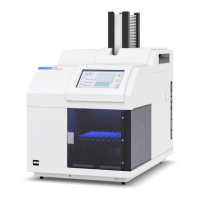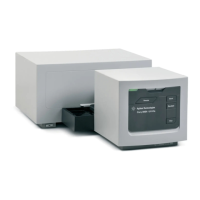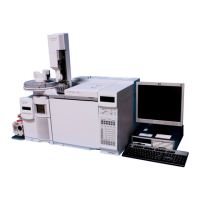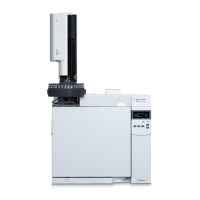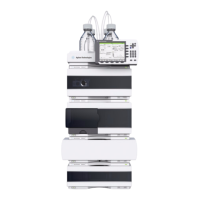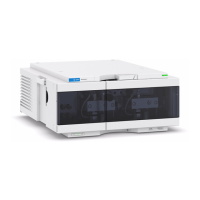7 Gas Selection and Plumbing
GC/MS Gas Requirements
46 Site Preparation Guide
7200 and 7250 Series Q-TOF MS
Table 22 lists the limits on total gas flow into the 7200/7250 Q-TOF GC/MS.
Table 23 lists typical flows resulting from selected carrier and reagent gas source pressures.
Table 21 7010 and 7000 Triple Quad MS carrier gases
Carrier gas requirements Typical pressure range Typical flow (mL/min)
Helium (required)
(column and split flow)
345 to 552 kPa
(50 to 80 psi)
20 to 50
Hydrogen (optional)
*
(column and split flow)
345 to 552 kPa
(50 to 80 psi)
20 to 50
Methane reagent gas
(required for CI operation)
103 to 172 kPa
(15 to 25 psi)
1 to 2
Ammonia reagent gas (optional) 34 to 55 kPa
(5 to 8 psi)
1 to 2
Isobutane reagent gas (optional)
†
103 to 172 kPa
(15 to 25 psi)
1 to 2
Carbon dioxide reagent gas (optional)
†
103 to 138 kPa
(15 to 20 psi)
1 to 2
Nitrogen for collision cell (nitrogen source is supplied to EPC
module in GC.)
1.03 to 1.72 bar
(104 to 172 kPa, or 15 to 25 psi)
1 to 2 (mL/min)
* Hydrogen gas can be used for the carrier gas but specifications are based on helium as the carrier gas. Please observe all hydrogen gas safety
cautions.
† Reagent available with manual tune only.
Table 22 7200/7250 Q-TOF GC/MS total gas flow limitations
Feature 7200 7250
High vacuum pump 1 Split-flow turbo Split-flow turbo
High vacuum pump 2 Split-flow turbo Turbo
High vacuum pump 3 Turbo Turbo
Carrier gas optimal gas flow, mL/min
*
1.0 to 1.5 1.0 to 1.5
Carrier gas maximum recommended gas flow, mL/min 2.0 2.0
Carrier gas maximum gas flow, mL/min
†
2.4 2.4
Reagent gas flow (EI/CI – CI application) 1.0 to 2.0 NA
Collision cell gas flow rate, mL/min (Nitrogen) 1.5 1.0
Collision cell gas flow rate, mL/min (Helium) 4.0
Maximum column id 0.32 mm (30 m long) 0.32 mm (30 m long)
* Total gas flow into the MS = column flow + reagent gas flow (if applicable) + collision cell gas flow.
† Expect degradation of spectral performance and sensitivity.

